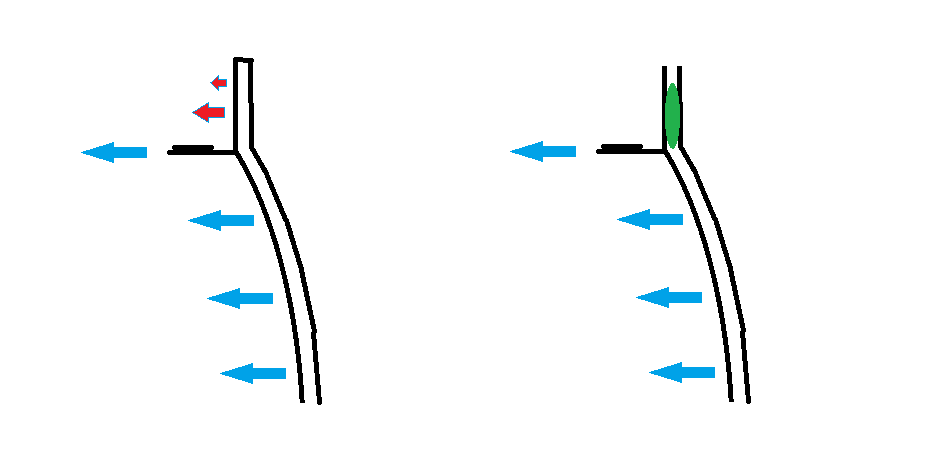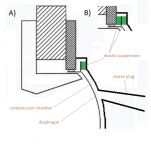Hello. I´m now playing with AKABAK third day, and thanks to Mabat, it seems little easier. I cannot import properly any project though. Even sample project is refused. First error it claims is that "Offset" is not integer. So I searched through the files and found out (maybe) a missing parsing delimiter in solving.txt. ";" was missing near offset parameter. So I added that one, and then this particular error is not triggered anymore.
When I try to load the project again, it gets further with notification about more files it managed to open. Stops at "Observation.txt". When I try to solve this project in AKABAK "as is" now, I got error "Range check error - Solving aborted". Log Calc TAB in AKABAK ends up at "Observation of Radiation-Spectra..." step/paragraph. I again suspect there is something wrong with these files, particularly "Observation.txt". SPL_nodes.txt seems to be not loaded in the project import window.
Anybody experienced this? Could someone please try to upload functioning easy project based on Mabat´s output for AKABAK? Thank you.
When I try to load the project again, it gets further with notification about more files it managed to open. Stops at "Observation.txt". When I try to solve this project in AKABAK "as is" now, I got error "Range check error - Solving aborted". Log Calc TAB in AKABAK ends up at "Observation of Radiation-Spectra..." step/paragraph. I again suspect there is something wrong with these files, particularly "Observation.txt". SPL_nodes.txt seems to be not loaded in the project import window.
Anybody experienced this? Could someone please try to upload functioning easy project based on Mabat´s output for AKABAK? Thank you.
Last edited:
ABEC3 does not seem to be available anymore:The output of my program is still supposed to be used with ABEC 3.
R&D-Team - Products
Or is it simply a name change?
/Anton
I will look for particular version then.
I have downloaded 3.5.3 I think, and this one is not happy too..
Sampleproject — ImgBB
I have downloaded 3.5.3 I think, and this one is not happy too..
Sampleproject — ImgBB
The version from Ro808 is the same I have (tried to reinstall his file anyway), and the problem with observation file persists. Parameters are incompatible.
Solved "Polar" one, but no idea about the resting ones.
I will search for 3.6.0 then. Thank you, at least we know what´s wrong for the moment, it is priceless information to have while troubleshooting.
Solved "Polar" one, but no idea about the resting ones.
I will search for 3.6.0 then. Thank you, at least we know what´s wrong for the moment, it is priceless information to have while troubleshooting.
I think no harm will be done if I upload the old demo version on my website: ABEC 3.6.0 Demo
This is the version I use. All the projects generated by Ath should work smoothly.
This is the version I use. All the projects generated by Ath should work smoothly.
I don't see how that could work. What is a "diaphragm integrated into the phase plug"?Small forward-radiating diaphragms are often integrated into the phaseplug, this way the issues with the surround and compression cavity can be (partly) mitigated.
The solution seems to be to use shorter and more elastic suspensions. Overall, the problem just go away for a small enough diaphragm. All of this just shifts higher in frequency, out of any trouble.
- I thought about the one-piece metal diaphragms and probably the biggest advantage is the better heat conduction away from the voice coil. Not sure how important that would be for a domestic use.
Last edited:
So, the latest version of ABEC 3.6.0 works (at least somehow, I still do not fully understand few things). The model and project data is imported without issue, and directivity patterns can be viewed in VACS. Contours, Polars, fields, no success, but that it not a problem at the moment.
Next step will be torture in Fusion and more playing with ATH.
Thank you very much for your help.
Next step will be torture in Fusion and more playing with ATH.
Thank you very much for your help.
A typical silicone sealant resists temperatures to about 100°C, some even to 300°C. Could that possibly work? Hardness is about 20 - 40 Shore A. What is the mechanical property that would indicate its suitability for this purpose?...And this would be my completely naive attempt to resolve it -
Last edited:
If you're planning on using it as a filler material, it seems to me it would be too stiff? But silicone foam might work if it's clamped/snugged in place.A typical silicone sealant resists temperatures to about 100°C, some even to 300°C. Could that possibly work? Hardness is about 20 - 40 Shore A. What is the mechanical property that would indicate its suitability for this purpose?

The suspension of a CD is normally very stiff to restrain excursion as well as to raise the resonance into the passband. But equally, if not more important is it's lateral stiffness. This is required to keep the voice coil centered in its very narrow gap. Silicone may be fine for the excursion, (a little too soft though I suspect) but what you show would have very very low lateral stiffness (the silicone in shear.) This would be a major problem in practice.
You might try filling the gap, but I suspect this still won't be stiff enough.
You might try filling the gap, but I suspect this still won't be stiff enough.
- Home
- Loudspeakers
- Multi-Way
- Acoustic Horn Design – The Easy Way (Ath4)
